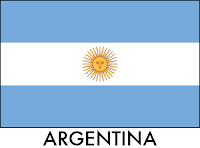 I love the idea behind Xavier Flouret Wines: using a single brand and design, bottles are pulled from wineries around the world. It's a great way to try wines from small, family-run vineyards that might not otherwise see widespread distribution. There are plenty of companies that do this, but Xavier Flouret fills out the back label with information about the winemaker and winery in addition to the tasting notes.
I love the idea behind Xavier Flouret Wines: using a single brand and design, bottles are pulled from wineries around the world. It's a great way to try wines from small, family-run vineyards that might not otherwise see widespread distribution. There are plenty of companies that do this, but Xavier Flouret fills out the back label with information about the winemaker and winery in addition to the tasting notes. In the past I've reviewed three of their wines, with my favorite still being that beautiful Nationale 7 rosé. Here are the three most recent releases:
 2010 Xavier Flouret Fynbos
2010 Xavier Flouret FynbosBottelary Hills, Stellenbosch
100% Chenin Blanc
$14, 13.8% abv.
Pineapple and peach with a little apricot on the nose. The flavor is far more restrained, with just a dash of acidity and softer tropical fruit flavors than you're expecting. This would be a lot of fun with an old fashioned shrimp cocktail. Make the sauce yourself, boil up the shrimp, and set out a tray with a lot of ice. Fynbos is Afrikaans for "fine bush", and refers to a certain type of scrub vegetation in South Africa. The winemaker is Louis Roos of Mooiplaas Wine Estate.
2007 Xavier Flouret uQamata
Polkadraai Hills, Stellenbosch
36.5% Cabernet Franc, 36.5% Merlot, 12% Malbec, 12% Petit Verdot, 6% Cabernet Sauvignon
$20, 14.5% abv.
Nice bright raspberry nose with an undercurrent of chocolate and blueberry. Medium tannins and a rich, spicy finish. It's a great Bordeaux-style wine that gives you a lot of that casual claret experience. And it's nice to see something with so much Cabernet Franc in it--not often that you see Cab Sav down at the bottom of the list with a paltry 6%. The unusual name of the wine comes from the Xhosa supreme deity. Carmen Stevens of Amani Vineyards also happens to be the first black female winemaker in South Africa, something that would have been unthinkable 25 years ago.
 2007 Xavier Flouret Quattro Canti
2007 Xavier Flouret Quattro CantiSicily
50% Nero d'Avola, 50% Cabernet Franc
$24, 14% abv.
(Normally I'd just use the flag of Italy, but the Sicilian flag was too good to pass up. Medusa? A triskelion? Wheat? Hard to resist.) I really love these two grapes, and it's interesting to see them paired up with each other. It's an earthy wine, with a nose of granite and stewed fruit. On the palate it's decidedly old world--ancient old world. Almost no fruit, with dirty flavors and a tannic, bitter finish. It's refreshing to try something in this style, with so many wineries going to the full fruit-forward profile. Not for beginners; this is a wine that I would not have enjoyed during my first few years of wine drinking. Quattro Canti (four songs) also comes via a female winemaker, Stefania Lena of Fatascià.
Note: These wines were received as samples.























